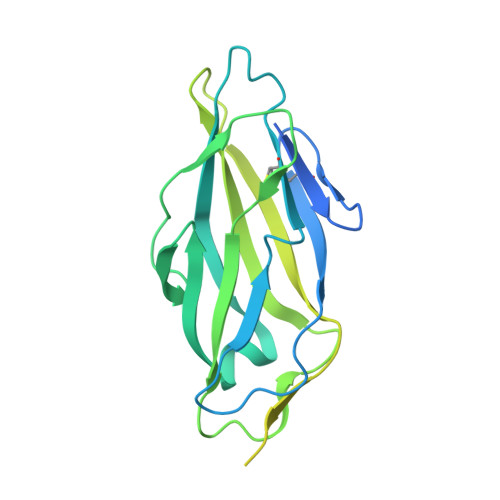Physiochemical Tuning of Potent Escherichia coli Anti-Adhesives by Microencapsulation and Methylene Homologation.
Alvarez Dorta, D., Chalopin, T., Sivignon, A., de Ruyck, J., Dumych, T.I., Bilyy, R.O., Deniaud, D., Barnich, N., Bouckaert, J., Gouin, S.G.(2017) ChemMedChem 12: 986-998
- PubMed: 28257558
- DOI: https://doi.org/10.1002/cmdc.201700061
- Primary Citation of Related Structures:
5MTS - PubMed Abstract:
Thiazolylaminomannosides (TazMan) are FimH antagonists with anti-adhesive potential against adherent-invasive Escherichia coli (AIEC) promoting gut inflammation in patients with Crohn's disease. The lead TazMan is highly potent in vitro, but shows limited in vivo efficiency, probably due to low pH stability and water solubility. We recently developed a second generation of stable TazMan, but the anti-adhesive effect was lower than the first. Herein we report a co-crystal structure of the lead TazMan in FimH, revealing that the anomeric NH group and the second thiazole moiety provide a positive hydrogen bonding interaction with a trapped water molecule, and π-stacking with Tyr48 of FimH, respectively. Consequently, we developed NeoTazMan homologated with a methylene group for low-pH and mannosidase stability with a conserved NH group and bearing various heterocyclic aglycones. Microencapsulation of the lead NeoTazMan in γ-cyclodextrin dramatically improved water solubility without disrupting the affinity for FimH or the anti-adhesive effect against AIEC isolated from patients with Crohn's disease.
Organizational Affiliation:
LUNAM Université, CEISAM, Chimie Et Interdisciplinarité, Synthèse, Analyse, Modélisation, UMR CNRS 6230, UFR des Sciences et des Techniques, 2 rue de la Houssinière, BP 92208, 44322, Nantes Cedex 3, France.
















